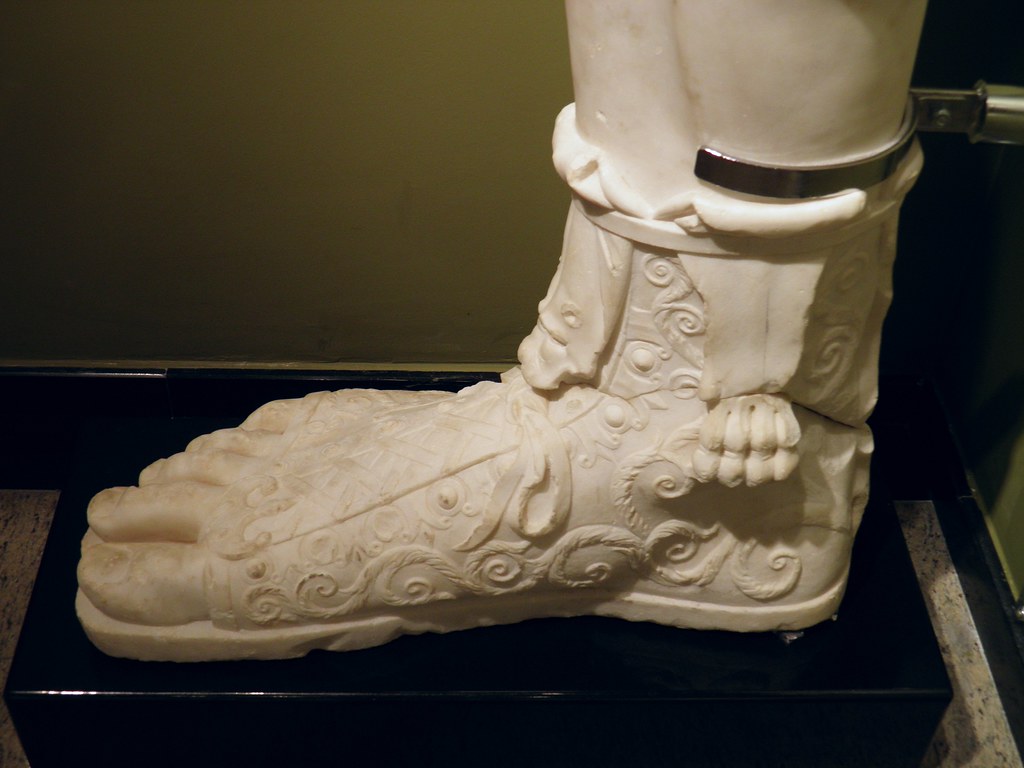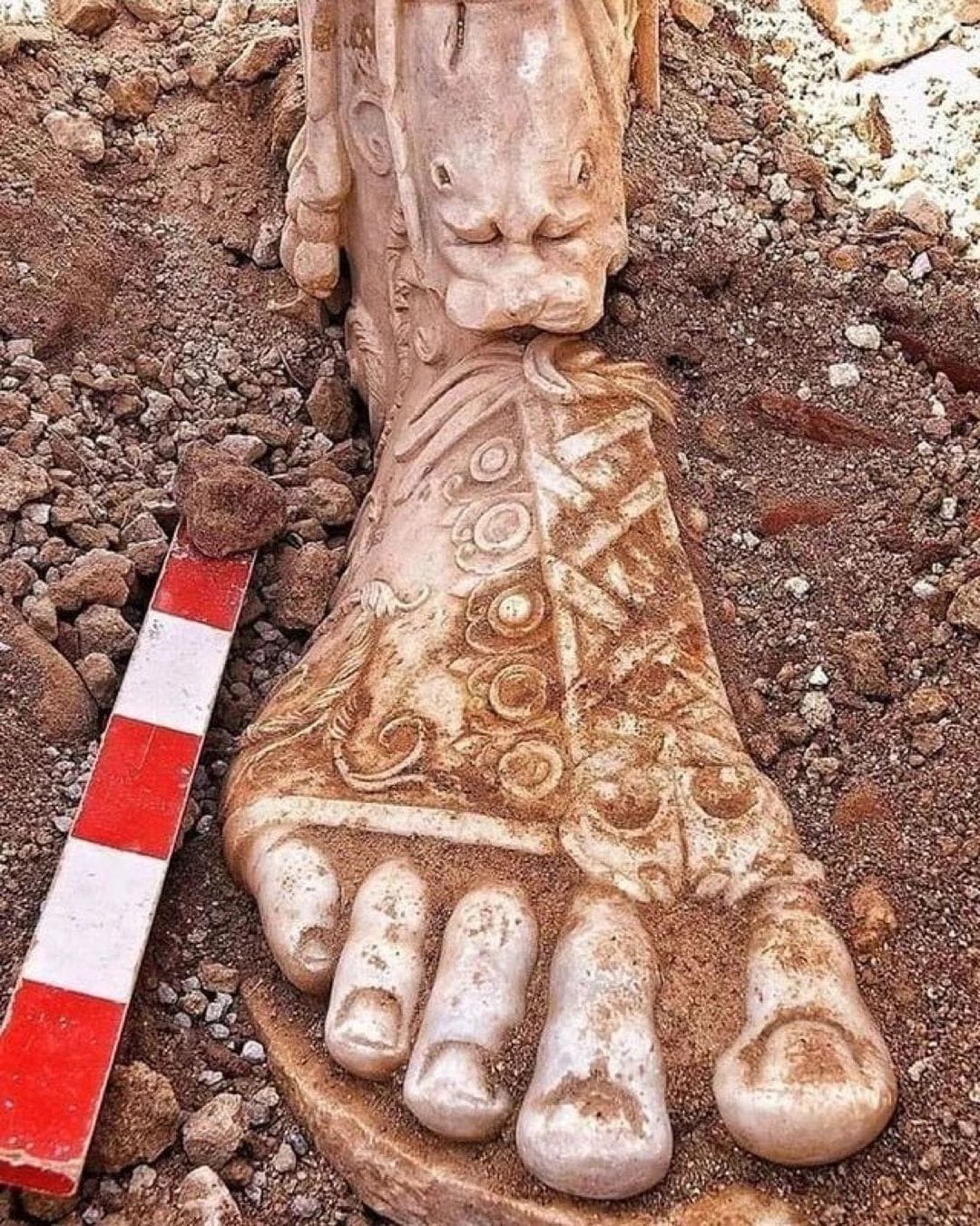Marcus Aurelius: Sagalassos Statue’s Historical Significance

In the ancient ruins of Sagalassos, Turkey, a remarkable archaeological discovery in 2008 unveiled a fragment of Roman imperial grandeur: the lower part of a leg and foot adorned with a sandal, belonging to an oversized statue of Emperor Marcus Aurelius. Reigning from 161 to 180 A.D., Marcus Aurelius is celebrated not only as a philosopher-king but also as one of the last of the Five Good Emperors of Rome, known for his stoic philosophy and leadership during a pivotal era in Roman history.
The statue fragment found at Sagalassos offers a poignant glimpse into the artistic and cultural milieu of the Roman Empire during Marcus Aurelius’ reign. Crafted on a monumental scale, such statues were intended to convey the authority and divinity of the emperor, while also serving as symbols of Roman power and governance in distant provinces like Sagalassos.

The meticulous craftsmanship evident in the fragment—particularly in the detailed rendering of the leg, muscular contours, and the delicate depiction of the sandal—reflects the artistic standards and technical expertise of Roman sculptors during the 2nd century A.D. Each aspect of the sculpture, from the naturalistic portrayal of the foot to the intricate straps of the sandal, speaks to the mastery and attention to detail characteristic of imperial Roman art.
Sagalassos, nestled in the Taurus Mountains of southwestern Turkey, served as an important regional center during antiquity, known for its prosperous economy and vibrant cultural life under Roman rule. The discovery of Marcus Aurelius’ statue fragment not only enriches our understanding of Sagalassos’ historical significance but also highlights the enduring influence of Roman civilization on distant provinces of the empire.
The excavation and restoration efforts surrounding the Sagalassos statue fragment provide valuable insights into the conservation challenges and scholarly endeavors associated with preserving ancient artifacts. Through meticulous study and analysis, archaeologists and historians strive to unravel the statue’s original context, its role in the civic and religious life of Sagalassos, and its symbolic significance within the broader framework of Roman imperial propaganda.

Furthermore, the discovery of Marcus Aurelius’ statue fragment at Sagalassos prompts reflections on the emperor’s legacy as a philosopher-king and his impact on Roman governance and philosophy. Known for his philosophical treatise “Meditations,” Marcus Aurelius’ reign marked a period of stability and introspection amidst the challenges faced by the Roman Empire.
In conclusion, the lower part of the leg and foot with a sandal from the statue of Marcus Aurelius found at Sagalassos stands as a testament to the enduring legacy of Roman artistry and governance. Its discovery enriches our appreciation of Marcus Aurelius’ reign and underscores the cultural interconnectedness of the Roman Empire’s diverse provinces. Preserved through meticulous archaeological efforts, this fragment continues to inspire fascination and scholarly inquiry, offering a tangible link to the past and a glimpse into the grandeur of ancient Rome.